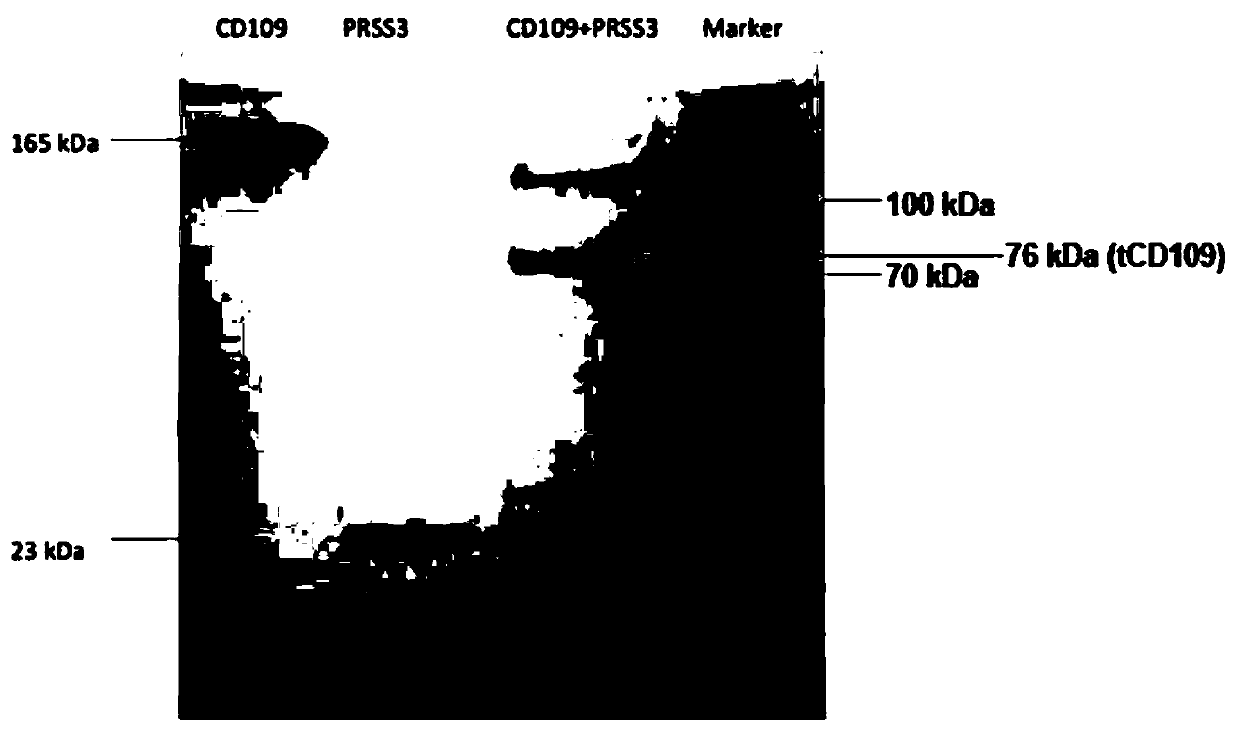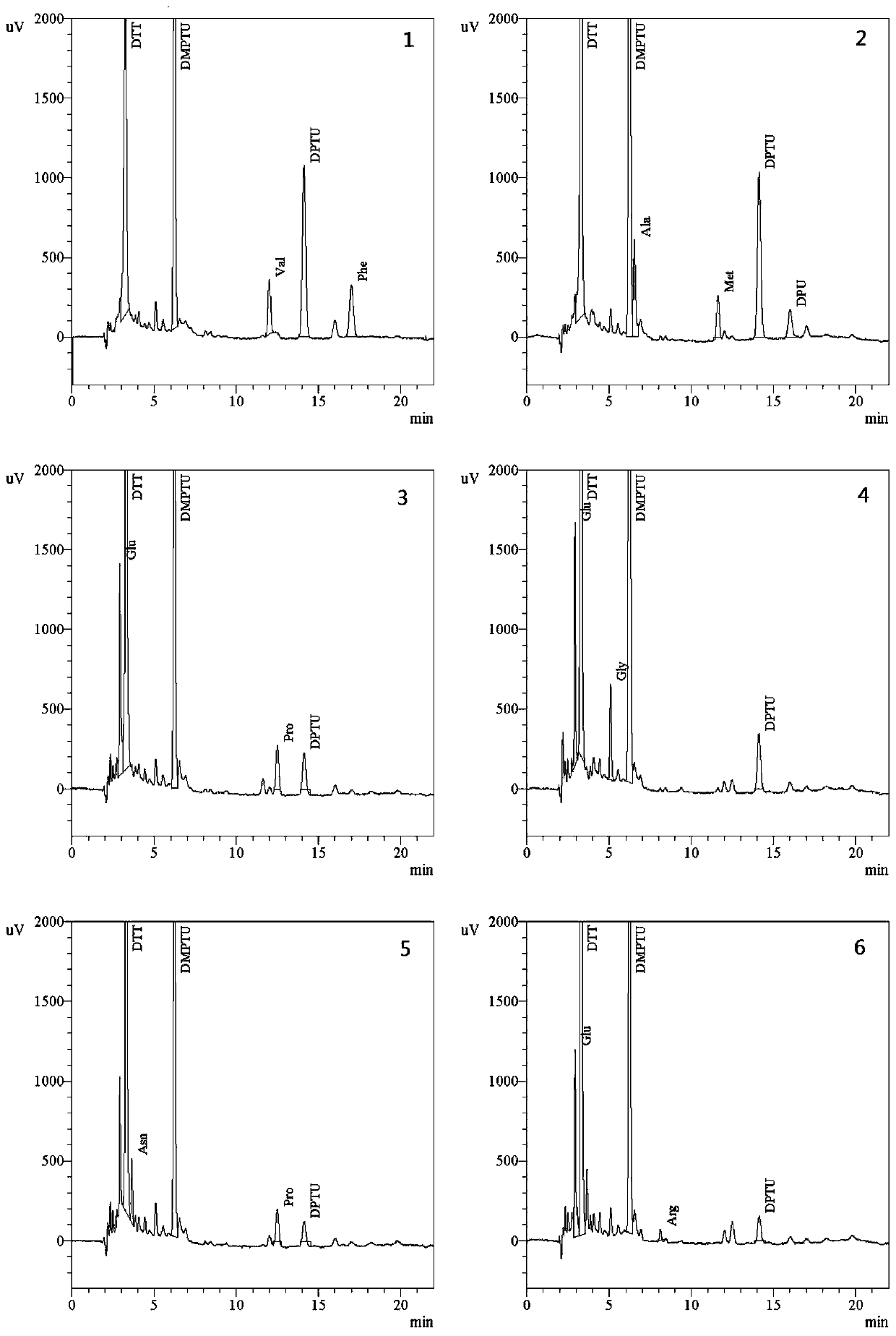Application of a human tcd109 and its detection kit in the diagnosis of pancreatic cancer
A technology of tcd109 and a kit, applied in the field of genetic engineering biology, can solve the problem of less research on the role of CD109
- Summary
- Abstract
- Description
- Claims
- Application Information
AI Technical Summary
Problems solved by technology
Method used
Image
Examples
Embodiment 1
[0028] Embodiment 1, tCD109 sequence identification
[0029] The tCD109 sequence identification method comprises the following steps:
[0030] (1) Shedding CD109 biotinylation, cleavage and capture. The human pancreatic cancer Patu8988s cell monolayer normally cultured and grown to 90-95% in a 24-well plate was fully washed with ice-cold PBS, and 300 μl containing biotin-XX, SSE (final concentration of 0.5 mg / ml, Invitrogen) in PBS / 4% DMSO solution for labeling for 30 min. Subsequently, the cells were washed, cultured with 1ml DMEM serum-free medium, and treated with active PRSS3 at a final concentration of 200nM at 37°C for 4h, and an equal volume of solvent without active PRSS3 was added as a control. Conditioned medium was collected and biotinylated proteins were isolated using Streptavidin Agarose Resin. Proteins were separated and stained by SDS-PAGE gel.
[0031] (2) Identification of the amino acid sequence of the shedding CD109. In isolation of biotinylated prote...
Embodiment 2
[0032] Example 2. Detection method and prognosis analysis of tCD109 in serum of human pancreatic cancer patients
[0033] 2.1. Detection method
PUM
 Login to view more
Login to view more Abstract
Description
Claims
Application Information
 Login to view more
Login to view more - R&D Engineer
- R&D Manager
- IP Professional
- Industry Leading Data Capabilities
- Powerful AI technology
- Patent DNA Extraction
Browse by: Latest US Patents, China's latest patents, Technical Efficacy Thesaurus, Application Domain, Technology Topic.
© 2024 PatSnap. All rights reserved.Legal|Privacy policy|Modern Slavery Act Transparency Statement|Sitemap



